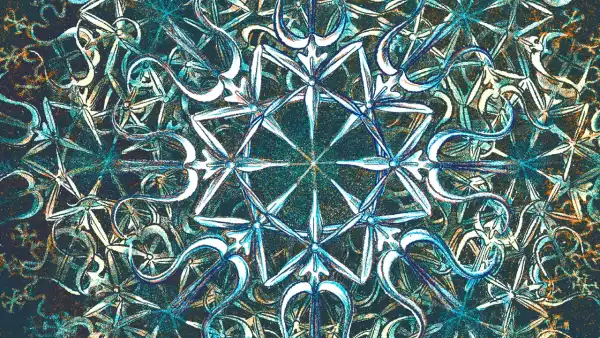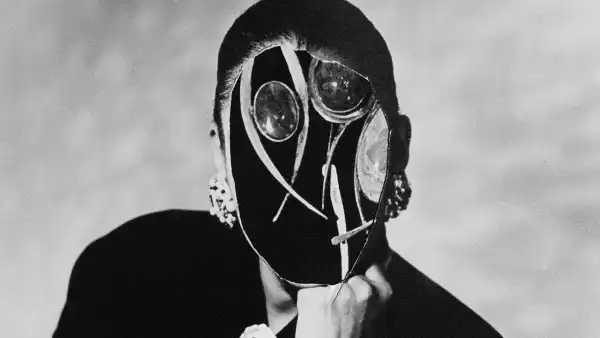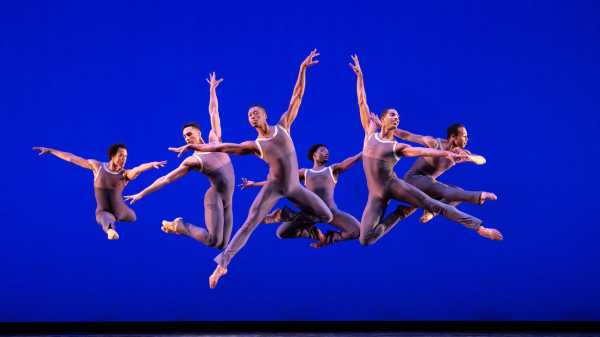
Save this storySave this storySave this storySave this storyYou’re reading the Goings On newsletter, a guide to what we’re watching, listening to, and doing this week. Sign up to receive it in your inbox.
From the start, Dance Theatre of Harlem’s history has been a cycle of struggle and triumph. The dancer Arthur Mitchell founded it in 1969, in response to the assassination of Martin Luther King, Jr. The company thrived, until it didn’t, and was forced to shut down, in 2004, for almost a decade. In 2012, the former D.T.H. company member Virginia Johnson, one of the great American ballerinas of the nineteen-seventies and eighties, revived it, and, with grace and care, led the company back to stability. Two years ago, she handed D.T.H. off to Robert Garland, who, like Johnson, has spent practically his entire career there, first as a dancer, and later as a teacher and a choreographer. Garland knows the company inside and out, and knows what the dancers are capable of, and how to nudge them toward it.
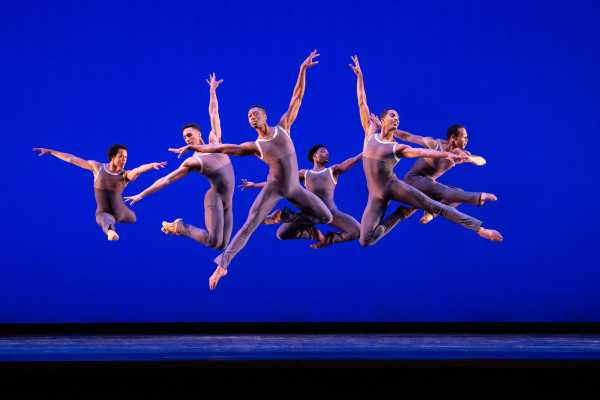
Photograph by Jeff Cravotta
This year, the company’s season, at City Center (April 10-13), includes a work by William Forsythe, a choreographer who, in the late nineties, expanded the technique of ballet to new extremes, adding to it an edge of risk and sass. The work, “The Vertiginous Thrill of Exactitude,” from 1996, is one of his most famous. As its title implies, it is a ballet that exalts everything that the art form, and the dancers, can achieve: lightning speed, knife-edge precision, expansive physical range, and rigorous geometries, combined with the ability to distort those geometries at will. Forsythe was building upon the innovations of George Balanchine, whose works are embedded in D.T.H.’s DNA—Mitchell danced for Balanchine for more than a decade. So it makes sense that Balanchine also appears in the season, in the form of his ballet “Donizetti Variations,” a work that combines brilliance and an infectious bubbliness. And from Garland, whose dances have a way of celebrating the individuality of the company’s performers, a new work, “The Cookout,” set to music by, among others, the neo-soul singer Jill Scott and the funk band Cymande.—Marina Harss

About Town
Hip-Hop
As a teen-ager, the Chicago rapper Saba performed at open-mike nights at the YOUmedia center, and for Young Chicago Authors, slowly unspooling a tightly wound wordplay. His début, in 2016, “Bucket List Project,” established a fluid, sinuous style, but his creative awakening occurred amid tragedy, in 2018: “Care for Me,” which wrestled with the murder of his cousin, the rapper John Walt, delivered a gorgeous meditation on loss, memory, kinship, attention, and custody. His new album, “From the Private Collection of Saba and No ID,” a collaboration with the home-town producer known for his work with Common and Kanye West, feels like the history of Windy City rap pulled through a point, with Saba a shining symbol of No I.D.’s lasting influence.—Sheldon Pearce (Blue Note; April 11-13.)
Classical
One doesn’t need to have synesthesia to experience color in Schumann—just in the opening of the A-minor piano concerto, we go from sharp scarlet to rumbling whirlpools of deep maroon. It is only fitting, then, that the composer would be featured in the Met’s “Sight and Sound,” a lecture and performance series. For a pairing with the exhibition “Caspar David Friedrich: The Soul of Nature,” the Met highlights Schumann’s “Rhenish” Symphony. Written after the composer relocated to Düsseldorf, the piece features a folkish, almost pastoral seed sown by his new surroundings. The conductor and music historian Leon Botstein leads musings on these two artists and the symbiotic relationship of their art forms, with music performed by the Orchestra Now.—Jane Bua (Metropolitan Museum of Art; April 13.)
Art
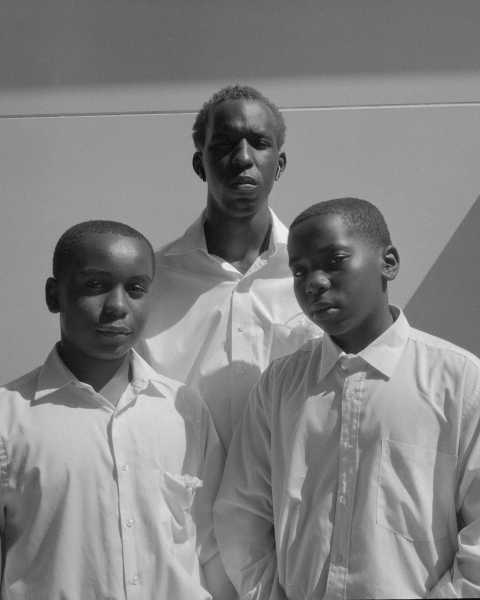
“Brothers After Wake, Louisiana,” from 2020.Photograph by Rahim Fortune / Courtesy Sasha Wolf Projects / Howard Greenberg Gallery
Rahim Fortune combines black-and-white photographs from two books—“I Can’t Stand to See You Cry” and “Hardtack”—for a show with the punch of engaged reportage and the intimacy of a family album. He finds nearly all his subjects—mostly Black and Indigenous family members and friends—in Texas, at rodeos, in farmyards, and in church. Even when the setting isn’t religious, Fortune’s rural community comes together in strength and resilience. His unsentimental landscapes underline this sense of shared history, recalling the human cost of every plot of land. A closeup of a young man’s forearm with a fading tattoo of the state of Texas slashed by a freshly stitched scar captures the mixed emotions that charge Fortune’s best work.—Vince Aletti (Greenberg; through May 24.)
For more: read Andrea DenHoed on Fortune’s Texas homecoming.
Broadway
A profusion of flowers—exploding from vases, jackets, and couches—riots against the darkness of Kip Williams’s astonishingly inventive solo adaptation of “The Picture of Dorian Gray,” Oscar Wilde’s story about an increasingly decadent man whose portrait ages as his own face remains youthful. Sarah Snook plays twenty-six parts as videographers and dressers swarm around her; her live-captured virtuoso performance appears on huge, gleaming black screens, often playing opposite her prerecorded self. “Gray” held the mirror up to Victorian hypocrisy; here, Williams focusses on present horror. Closeups let us see how Snook’s beautifully mobile expressions defy today’s “norm” of frozen, chemically induced perfection. Her lack of vanity in a work about vanity emphasizes Wilde’s critique: a society that insists on gorgeousness grows uglier in secret.—Helen Shaw (Music Box; through June 15.)
For more: read Shaw’s interview with Snook, about her preparation regime, her resemblance to Leonardo DiCaprio, and the time she experienced a “benevolent haunting.”
Movies
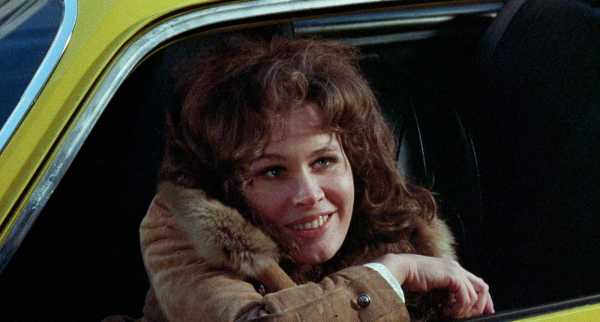
Karen Black in “Born to Win.”Photograph courtesy Criterion Collection
The Criterion Channel’s April offerings include the program “Fun City: NYC Woos Hollywood, Flirts with Disaster,” chosen by the critic J. Hoberman, featuring seventeen movies from the nineteen-sixties and seventies. One of the highlights, “Born to Win,” from 1971, stars George Segal as Jerome, nicknamed J, a middle-class heroin addict with motormouth charm. The comedy that launches the action—J’s meet-cute with a woman called Parm (Karen Black) while stealing her car—soon curdles into cruel absurdity as policemen (Ed Madsen and a young Robert De Niro) force J to become an informant. It’s the first American movie by the Czech director Ivan Passer, who films the city’s street life with fascination while grimly observing the law’s oppressive authority—and J’s moral degradation through lies and betrayals.—Richard Brody
For more: read Margaret Talbot on the “time-travelling sort of intimacy” of Karen Black’s lost music.
Television
Minutes into the new Netflix drama “Adolescence,” a thirteen-year-old boy, Jamie Miller (Owen Cooper), is arrested for murder. By the end of the interrogation scene that ensues, it’s incontrovertible that Jamie killed one of his classmates, a girl named Katie. The U.K.-set limited series is not a whodunnit but a “whydunnit,” told mostly from the points of view of the adults around him: his parents (Stephen Graham and Christine Tremarco); a clinical psychologist (Erin Doherty); and the lead detective, Luke Bascombe (Ashley Walters). “Adolescence” is an expression of parental panic, an effort to grapple with the crisis of boys and tech-addled masculinity today. And though it pays lip service to Katie’s neglected humanity, its true sympathy lies less with the victim than with the grownup bystanders trying to make sense of it all.—Inkoo Kang
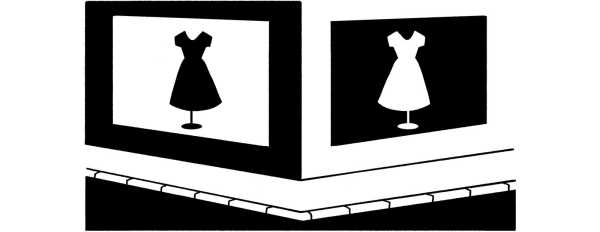
On and Off the Avenue
Rachel Syme on the latest in charms.
A few weeks ago, I was browsing in the MOMA Design Store, in SoHo, for a housewarming gift, when my eyes warmed, instead, to a pair of earrings that I knew belonged in my house. They were long and dangly, composed of teeny, mismatched, New York City-themed charms, each about the size of a pinkie nail. The charms were like no others I’d seen—made of shrunken photographs coated in clear resin, like insect wings trapped in tree sap. These glassy encasements elevated each itty-bitty snapshot of kitschy urban ephemera (a taxi cab, a bodega coffee cup, a slice of pizza, a smiley-face plastic shopping bag) to a surprising elegance—undercut with impish humor. They reminded me of the sort of moony collage a teen-age girl in the suburbs might make after deciding that a cosmopolitan life was her fate; I know this because I was that girl once, forging my way toward an identity with a stack of fashion magazines and a glue stick.
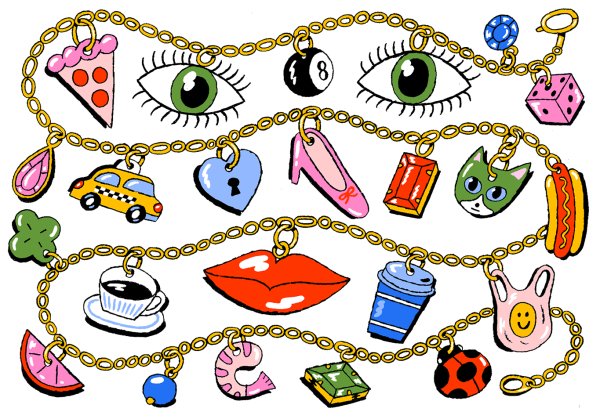
Illustration by Min Heo
I was delighted to discover that the brand behind the earrings, Haricot Vert, opened a brick-and-mortar location in Williamsburg (119 N. First St.) in the spring of 2024—and I was doubly delighted to find that the storefront is even more whimsical and nostalgia-inducing than I’d expected. The founder of Haricot Vert, twenty-eight-year-old Kelsey Armstrong, told me that she’d fallen for mixed-media art as a marketing student at the American University of Paris. There she studied collage, découpage, and assemblage, finding that she had a knack for combining disparate ideas. After college, Armstrong moved to New York, where, she said, “I began to think, How can I take the art of collage, which I love so much, and turn it into jewelry? And the picto-charm was born.” Armstrong spent a year experimenting to develop the proprietary picto-charm process, which involves nine steps and several days. “It’s closer to making ceramics than working with Shrinky Dinks,” she said. Armstrong launched Haricot Vert from her living room in Queens, in 2019; soon sales exploded online (Emma Roberts and Gigi Hadid were early fans). She then moved into a small studio in Greenpoint, in 2020, and found that her customers delighted most in putting together their own custom charm concoctions. When Armstrong opened the Williamsburg store, she leaned heavily into the “charm bar” aspect of the business. The airy space, which she has nicknamed dreamworld, features broad, undulating tables full of picto-charms and invites long visits; each shopper is encouraged to place a mishmash of charms on a tray and bring them to a consultant who helps lay out a necklace, bracelet, or key ring, fashioning the piece on the spot (single-charm pendant necklaces start at $38). Armstrong recently converted the store’s third floor into a “craft nook” aerie, offering classes ($18-$88) on collage, jewelry construction, and dollhouse miniatures. It is, in a word, charming.
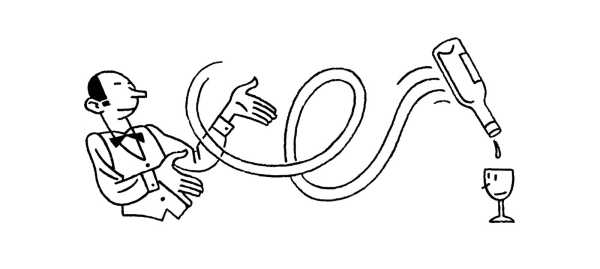
Bar Tab
Taran Dugal finds turtle races and strong drinks in Bed-Stuy.
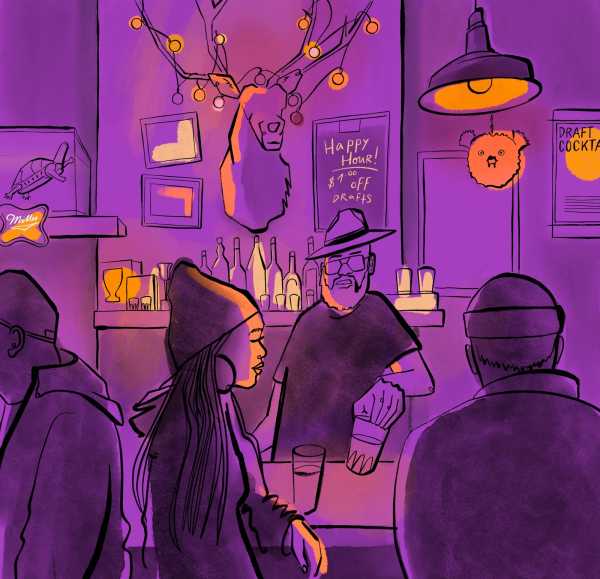
Illustration by Patricia Bolaños
Should one find themselves in Bed-Stuy on the first Sunday of the month, searching for a contest with the gladiatorial trappings of a prizefight—save for grace, glory, and good will—they ought to make their way to Turtles All the Way Down. There, under dim amber lights, they will find a scene not unlike that of a particularly feral frat party: unquantifiable amounts of light beer, twenty-tens hip-hop playing at earsplitting volume, and an allowance of personal space that could only reasonably accommodate someone with the build of a sheet of loose-leaf paper. On a recent weekend, two newcomers entered the fray, hoping to catch the main event: the dive’s renowned turtle races, featuring Vita and Ja Rule, the red-eared sliders who live in a tank in the back. The first race, scheduled for four o’clock, had been delayed. In the back yard, hordes of patrons queued up to buy tickets. Rumors circulated. “I heard that one of the turtles just died,” a woman wearing sunglasses said. (It had not.) “I’ve been pregaming since noon,” one especially friendly attendee announced. (It was now four-thirty.) Another chimed in: “The best part of this bar is how strong the drinks are.” The newcomers agreed. One long hour later, tickets finally in hand, they elbowed their way back inside, where they were greeted by a man holding a QR code. “Scan this to watch the race,” he said. “Odds are, you won’t be able to see it from where you’re standing.” The newcomers glanced at one another, then toward the turtles (still in their tank), and, finally, down at their bone-dry cups. They held up their tickets to a couple who had just walked in. “Do you want these? We were just about to head out.” Slow and steady, it seems, does not always win the race.
P.S. Good stuff on the internet:
-
“Relatable Mom,” by Curtis Sittenfeld
-
A day with the best school-lunch chef
-
What’s it like being a girl in America?
Sourse: newyorker.com


